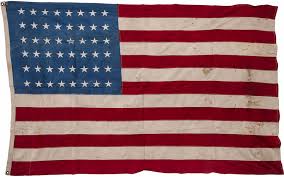JONES, Carl Norman
Corp. CARL N. JONES 


Pictured above, Carl Jones & Clela Bannon pre-marriage on a furlough - thanks so much to their grandson, Josh Sorrels, for sharing the picture and all this information. I knew both of these two and most of their family well. Visited them out on their farm and when they lived in Waveland in later years. They were married 26 January 1946 after his return from WWII and remained married for 60 years upon his death June 27, 2006. Clela died early this year (Feb 26th) in 2018. Such a dear person always so sweet and Carl always made me laugh - kbz.
Carl entered the 3rd Army, 249th Combat Engineers, 5 May 1943 at Camp Bowie, Texas. The batallion was a bit unique in that it was organized and under only three captains. The other officers were second lieutenants from the 1943 class of West Point.
AWARDS RECEIVED:
Good Conduct Medal
American Theatre Campaign Medal
European African Middle Eastern Campaign Medal (with 4 Campaign Stars)
WWII Victory Medal
Army of Occupation Medal with Germany Clasp
Carl entered the 3rd Army, 249th Combat Engineers, 5 May 1943 at Camp Bowie, Texas. The batallion was a bit unique in that it was organized and under only three captains. The other officers were second lieutenants from the 1943 class of West Point.
The 249th sailed from the US to England in May of 1944, landing on Utah Beach in August under the 1137th Engineer Combat Group commanded by Col. George A. Morris. fought in Northern France, Rhineland, and Central Europe.
After training, they joined the 26th Infantry engaged in defensive positions along the SE corner of the *Battle of the Bulge. The batalion blocked German advancements by setting landmines, and establishing various roadblocks.
On December 24, 1944, Brigadier General Harlan Harkness the assistant division commander ordered the battalion to advance and secure the towns of Arsdorf and Bigonvillle to the north of the 26th Infantry Division in order for the American troops to advance toward the enemy.
In February 1945, the Battallion was selected for the special task of crossing the Rhine River. On March 19, the unit was assigned to the engineer task force changed with crossing the Rhine at Oppenheim. The battallion met little resistance rossing the river and quickly began constructing the assigned bridge. After an accident resulting in a raft being sunk, the Battallion moved downriver to Mainz, where it was secured, and the 249th was then detached from the Engineer Group and was then to secure/maintain the bridges on the Rhine River.
In May 1945, when WWII ended in Europe, the Battallion was moved to Plattling, Germany where they built a camp for displaced refugees. In November they were sent on to their final European place at Camp Lucky Strike near Marseilles, France then returned to the US.
Carl and division was inactivated at Camp Patrick Henry, Virginia 27 November 1945. RIP Carl Norman Jones, we loved you!
Note: The Battle of the Bulge was noted as the most fierce of the WWII American Battles with over 600,000 men involved, 89,000 causalties including 19,000 KIA.
